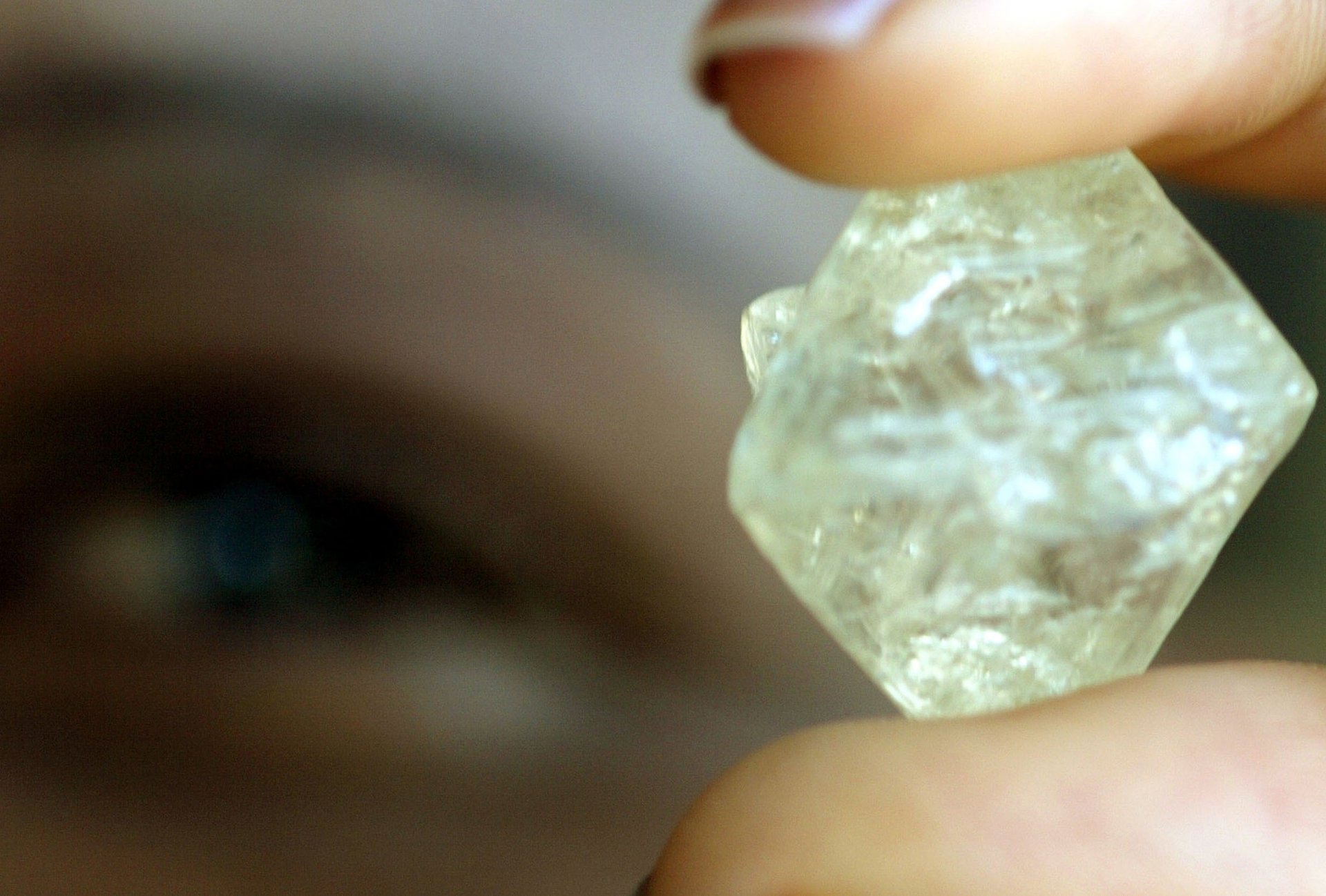When the world stops buying diamonds, this African country sees its economic growth cut in half
Botswana, one of the world’s top diamond producers, expects such weak demand for the gem this year that it has almost halved its forecast for economic growth. The government expects the economy to grow 2.6%, well below the original target of 4.9% for 2015, according to a strategy paper released this week.The world is not buying as many diamonds, cutting Botswana’s growth in half


Botswana, one of the world’s top diamond producers, expects such weak demand for the gem this year that it has almost halved its forecast for economic growth. The government expects the economy to grow 2.6%, well below the original target of 4.9% for 2015, according to a strategy paper released this week.The world is not buying as many diamonds, cutting Botswana’s growth in half
Diamond prices have fallen about 12% over the last five years. The industry had been counting on wealthy Indian and Chinese shoppers to make up for slowing demand elsewhere in the world, but a slowing Chinese economy and ongoing anti-corruption drive has dented enthusiasm for conspicuous jewelry.
After fueling decades of economic growth, infrastructure investment, and supplies of foreign reserves, diamonds have become a mixed blessing for the landlocked African nation. Critics say diamonds have delayed the country (pdf) from developing an economy beyond mining—the sector accounted for 25% of Botswanas’s GDP in 2013.
De Beers, which first discovered the world’s largest diamond mine by area in the Botswana town of Orapa in the late 1960s, has cut back its production targets by 1 million carats after sales fell 21% in the first half of the year. The company, also the world’s largest diamond producer, failed to sell 30% of its stock at a sale in March. Botswana’s diamond cutting industry is also struggling to compete with their counterparts in India, resulting in hundreds of layoffs over the past year.
McKinsey predicts that other customers in emerging countries will want branded over generic jewelry—a trend that is already evident in developed markets. This means that more of the value of the gem may go to the companies who own the brand rather than the product. “Consumers will want ‘a Tiffany ring’ rather than a ‘diamond ring,” the consultancy wrote in a report (pdf, p. 6) last year.
One bright point for diamond-dependent economies like Botswana’s is that there have been few new discoveries of diamond deposits—the last one was in Bunder, India in 2004. Demand is expected to outpace supply by 2025 (pdf, p. 6) when a series of mines are expected to go offline.